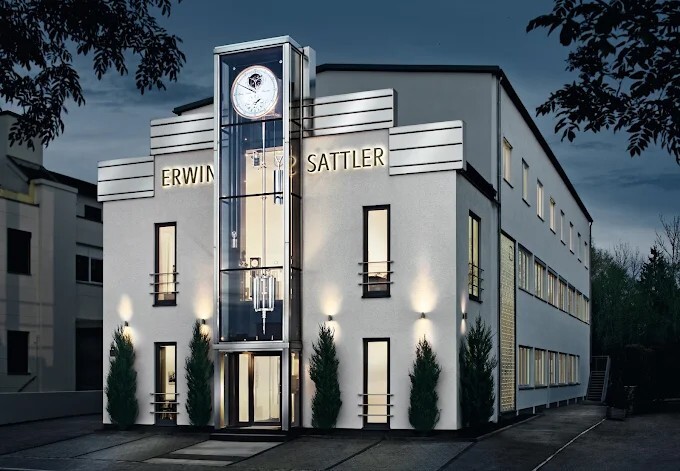
History of Erwin Sattler
-
1903
The legacy begins with Heinrich Sattler, Erwin’s grandfather, who patented a desk/shelf clock featuring a perpetual calendar on March 4, 1903. -
1958
Almost six decades later, Erwin Sattler—also a trained clockmaker—established his own manufactory in Gräfelfing near Munich, focused on the finest craftsmanship, precision, and timeless design. Early models featured hand-carved and gilded cases, and his wife Viola painted many by hand. -
1989
Stephanie Sattler, one of Erwin’s three daughters, joined. With her background in economics, she assumed roles in business administration, purchasing, and sales. -
1992–2002
The company transitioned from a clockmaker into a full-fledged manufactory by building its own movement production. By 2002, they achieved over 90 % production depth, enabling extensive customization in handcrafted clocks and watch winders. -
2002
Erwin Sattler retired and passed leadership to Stephanie Sattler‑Rick and watchmaker Richard Müller, who had previously worked as a sales representative and later as a partner. - Kit Innovation
The second generation launched Müller & Sattler Uhrenbausatz GmbH, offering precision pendulum clock kits for customers to assemble themselves—a bold and successful innovation. -
2006
The manufactory relocated to a larger facility in Gräfelfing, expanding machinery and workforce. A standout feature: the largest precision pendulum clock in the world now graces the facade, with an almost 8-meter-long pendulum. -
2019
Richard Müller retired; Markus Glöggler and Jürgen Kohler took over management alongside Stephanie Sattler‑Rick. -
Today
With dedication, the company evolved into a modern clock brand combining state-of-the-art manufacturing and centuries-old craftsmanship. Its timepieces are striking home furnishings and precision instruments, built to be passed on to future generations.

 Euro
Euro
 US Dollar
US Dollar
